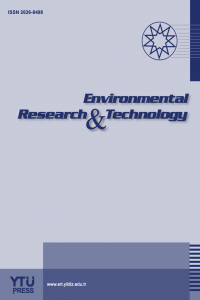An investigation based on removal of ibuprofen and its transformation products by a batch activated sludge process: A kinetic study
Activated sludge ibuprofen, metabolite, removal,
___
- A. F. Streit, G. C. Collazzo, S. P. Druzian, R. S. Verdi, E. L. Foletto, L. F. Oliveira, and G. L. Dotto, “Adsorption of ibuprofen, ketoprofen, and paracetamol onto activated carbon prepared from effluent treatment plant sludge of the beverage industry,” Chemosphere, Vol.262, pp.128322, 2021.
- T. Alvarino, S. Suarez, J.M. Lema, and F. Omil, “Understanding the removal mechanisms of PPCPs and the influence of main technological parameters in anaerobic UASB and aerobic CAS reactors,” Journal of Hazardous Materials, Vol.278, pp.506-513, 2014.
- Yayın Aralığı: Yılda 4 Sayı
- Başlangıç: 2018
- Yayıncı: Yıldız Teknik Üniversitesi
Şahin AKPINAR, Hasan KOÇYİĞİT, Fatma GÜRBÜZ, Mehmet ODABAŞI
Francis James OGBOZİGE, Helen NWOBU
Juciara LOPES, André ROSA, Izabelle SOUSA, Silas MELO, Antonella ALMEİDA, Alisson BORGES
Simge SERTGÜMEÇ, Ayşe Nur USTA, Cevat ÖZARPA
Ayşe ÖZGÜVEN, Dilara ÖZTÜRK, Tuba BAYRAM
Halil İbrahim UZUN, Eyüp DEBİK
Samahir A. S. IDRİS, Emel TOPUZ
Zehrudin OSMANOVİC, Nedzad HARACİC, İbrahim SARAJLİC, Amila DUBRAVAC, Eldin HALİLČEVİĆ
